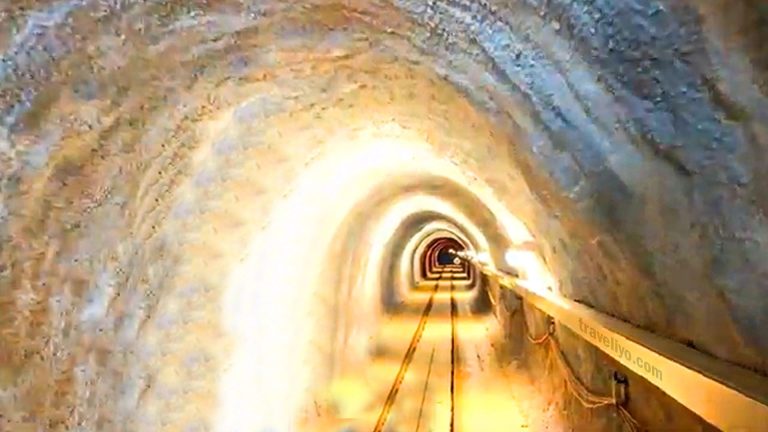Talassemtane National Park: The Ultimate Rif Mountains Hiking Escape near Chefchaouen
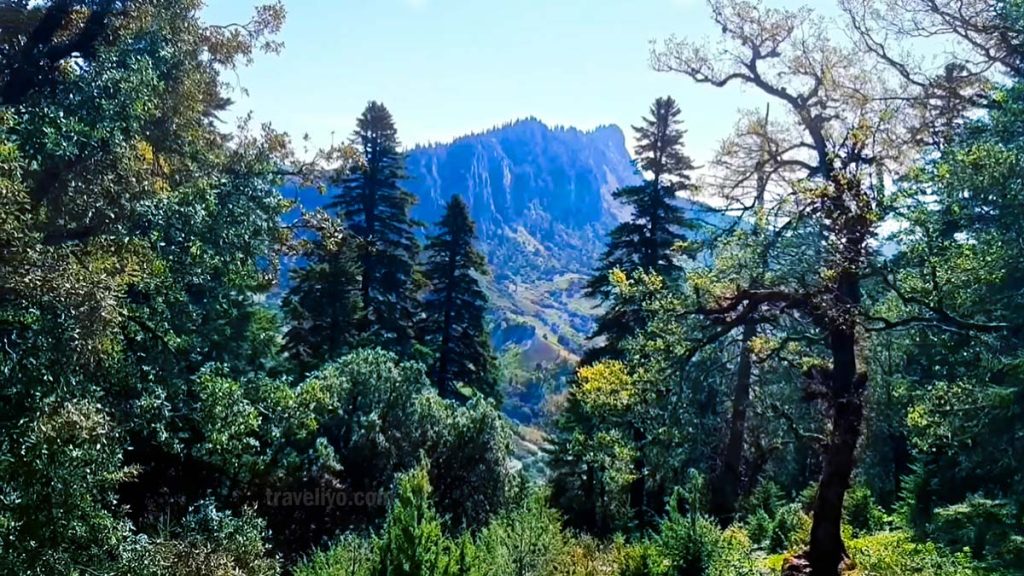
After spending a truly magical day wandering through the blue-washed alleyways of Chefchaouen, Taniya and I were ready for a change of pace—and scenery. When we first stepped into the northern folds of Morocco’s Rif Mountains the next morning, I didn’t expect Talassemtane National Park to feel so instantly different from the rest of the country. The moment we arrived, a cool mountain breeze brushed against my face, carrying the potent scent of pine, damp earth, and wild herbs. It felt like Morocco had suddenly switched into a calmer, more mysterious version of itself. Talassemtane National Park wasn’t just another green escape; it felt like a living, breathing sanctuary hidden just behind Chefchaouen’s famous blue walls.
Our first glimpse of the towering limestone cliffs made us stop walking without even realizing it. Layers of blue and grey rock rose sharply into the sky, wrapped in forests that looked untouched for centuries. The atmosphere was quiet in a sacred kind of way—almost like the mountains were whispering their own stories. Taniya kept saying, “I didn’t know Morocco had this side,” and honestly, neither did I.
As we continued deeper into Talassemtane National Park, the landscape kept changing with every turn. One minute we were walking through cedar forests shaded in rich green, and the next, we were surrounded by open valleys glowing under the afternoon sun. We could hear birds calling from hidden branches, distant waterfalls echoing through stone canyons, and the soft crunch of our boots on old mountain trails.
What struck me most in these first few hours was the blend of raw nature and peaceful silence. There was a gentle rhythm to the place—slow, grounding, and deeply refreshing. For someone who loves Rif Mountains Hiking, photography, and quiet corners of the world, this park felt like a dream unfolding step by step. And standing there with Taniya, breathing in the crisp mountain air, I knew instantly that this journey through Talassemtane would stay with us for a lifetime.
2. 🌿 Talassemtane National Park: A Quick Overview

Talassemtane National Park is one of the most remarkable protected landscapes in northern Morocco, stretching across the dramatic limestone peaks and deep valleys of the Rif Mountains. Situated just south of Chefchaouen, the park covers more than 58,000 hectares of forest, cliffs, canyons, and remote Berber villages. What makes Talassemtane National Park especially unique is its rare combination of biodiversity and cultural heritage—an environment shaped by centuries of mountain life yet still incredibly wild.
The park is famously known for its lush cedar and fir forests, some of which are among the last remaining stands of the endangered Moroccan fir. As you navigate the region, the terrain shifts beautifully from shaded woodland ideal for Rif Mountains Hiking to open meadows and striking rock formations. Small streams and hidden springs feed into stunning waterfalls, making the area a paradise for hikers who crave nature, quiet, and authentic Moroccan landscapes all in one place.
Talassemtane National Park also forms an important ecological zone within the Mediterranean Basin, recognized for its rare plant species and wildlife, including Barbary macaques, wild boar, and a variety of raptors. For travelers coming from Chefchaouen, the park feels like a natural extension of the blue city but with a more rugged, untouched character. This blend of environmental richness and cultural depth is what sets it apart, offering visitors a deeper look into Morocco’s northern highlands—one that feels both grounded and completely refreshing.
3. 💭 Why I Chose to Visit Talassemtane National Park

Choosing to visit Talassemtane National Park was a mix of deep curiosity, a lifetime love for nature, and a desire for genuine adventure. Having read extensively about the breathtaking Rif Mountains Hiking trails and the renowned Chefchaouen hiking routes, I felt instantly drawn to experience the park’s serene landscapes firsthand. Taniya and I both urgently wanted a place where we could truly disconnect from the bustle of everyday life and immerse ourselves in raw, unspoiled beauty.
Another powerful reason was the irresistible allure of the famous Akchour waterfalls tours. Seeing pictures of the cascading waters hidden deep in the mountains sparked an urge to witness them in person—a goal that became a cornerstone of our entire Moroccan adventure. I imagined the cool mist on my face, the echo of the falls in the valley, and the sense of accomplishment after reaching such a stunning natural spot. (Wait until our next article for the full story on that incredible trek!)
Ultimately, I wanted to experience Morocco beyond the usual city tours. Many travelers explore cities like Marrakech or Fes, but I wanted something different—a place where challenging hiking, unique wildlife, and panoramic views dominate the experience. Choosing Talassemtane National Park allowed me to follow that dream, and I knew this particular adventure would offer stories and memories that I could cherish and share for years to come.
4. 🎢 My Favorite Things to Do in Talassemtane National Park
Talassemtane National Park is an adventurer’s playground, and our time here was packed with unforgettable moments. Here are my favorite ways Taniya and I explored this incredible landscape:
1. Conquering the Rif Mountains Hiking Trails
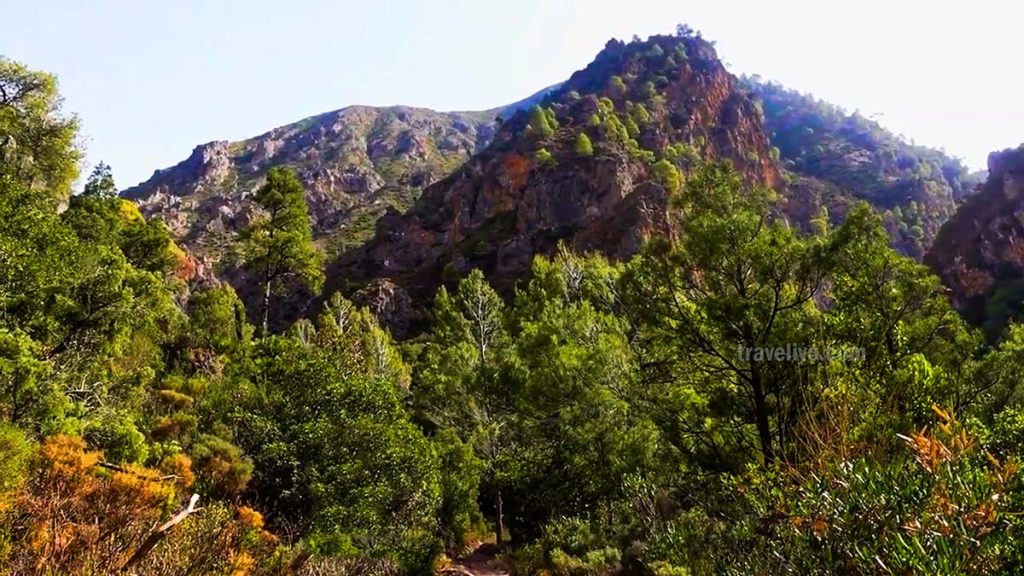
One of the first activities that drew me here was the renowned Rif Mountains Hiking trails. From the very first step, I was surrounded by towering cedar and oak trees, their powerful scents mixing with the cool mountain breeze. The trails vary significantly in difficulty, which made it perfect for Taniya and me—we could pick routes based on our energy levels each morning.
I remember struggling up a particularly steep section, joking with Taniya that I should’ve trained more before this trip. But the panorama from the top was worth every gasp for air. The view stretched endlessly, showing deep valleys, hidden villages, and the jagged peaks of the Rif Mountains. Every turn on the trail revealed something new—a cluster of wildflowers, the sound of a distant stream, or a curious mountain goat watching us from afar. This is world-class mountain trekking.
2. The Hidden Gems of Chefchaouen Hiking
No trip to this part of Morocco is complete without exploring the famous Chefchaouen hiking routes just outside the city limits. The blue city itself is a marvel, but hiking the surrounding hills offers a completely different, rugged experience. Trails lead from the quaint blue streets up into the verdant hills, offering views that make you appreciate the bustling town below from a peaceful distance.
We spent a morning following a narrow path lined with wild thyme and rosemary bushes. The scent was intoxicating, and every small incline revealed breathtaking vistas of the valley. Along the way, local hikers greeted us warmly, sharing tips about secret spots to see the Rif Mountains at sunrise. I tripped over a loose rock at one point, and Taniya laughed so hard she almost cried—a perfect reminder that travel isn’t always graceful, but always fun!
3. The Majestic Akchour Waterfalls Tours
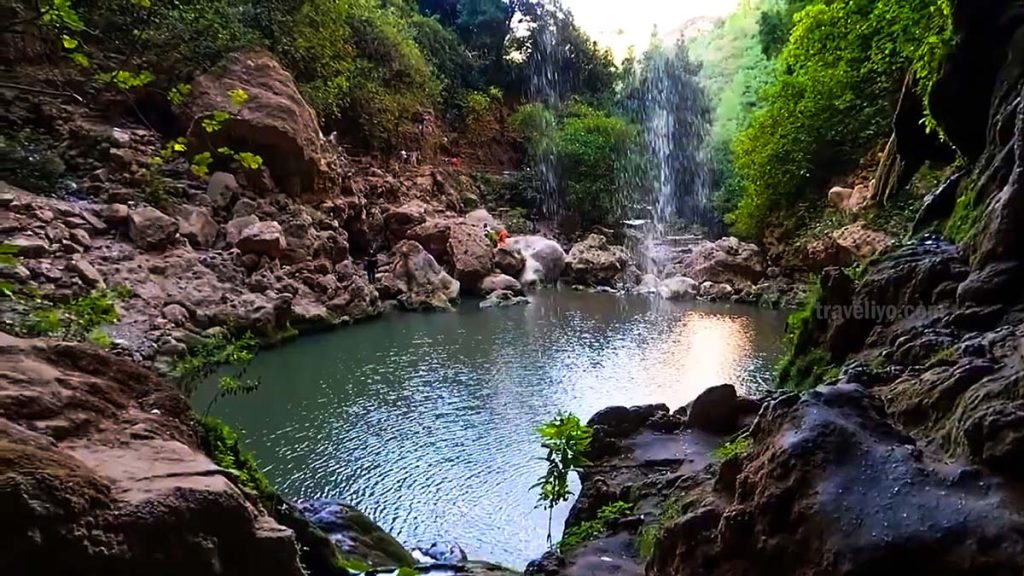
Perhaps the highlight of our adventure was the magnificent Akchour waterfalls tours. These falls are tucked away in a secluded, canyon-like part of the park, requiring a moderate hike that challenges both stamina and patience. I remember stopping multiple times, not just to catch my breath, but to marvel at the sparkling streams and lush greenery surrounding us.
When we finally reached the main waterfall, I was speechless. Water thundered down in a dramatic cascade, forming pools that beautifully reflected the sky. Taniya dared to dip her toes in the icy water, while I contented myself with soaking in the beauty and snapping endless photos. The sense of accomplishment after this hike made every aching muscle worth it. (Stay tuned for our dedicated article on this exact journey!)
4. Picnics, Photography, and Wildlife
Beyond the more active hiking adventures, one of my favorite things to do was simply finding a quiet spot to sit and enjoy the park. We packed a small picnic with fresh bread, local cheese, and olives—nothing fancy, but it tasted incredible surrounded by nature. I felt completely disconnected from the stress of everyday life, listening only to the wind and birdsong.
I also couldn’t resist capturing every corner of Talassemtane National Park with my camera. From misty mornings to golden sunsets, the light transformed the park every hour. We spotted foxes, wild goats, and countless bird species, each sighting adding a thrill to our journey. Taniya got a little too close to a curious fox and nearly had a mini heart attack—luckily, it was more startled than we were!
5. 🚗 How We Got There: Transportation from Chefchaouen
After spending that magical day wandering the blue-washed streets of Chefchaouen, Taniya and I were eager to escape into the wild heart of Talassemtane National Park. From Chefchaouen, reaching the park was relatively straightforward, but having a plan made all the difference. We opted for a private taxi, which gave us the flexibility to stop along scenic viewpoints and small villages on the way. The drive itself was an introduction to the Rif Mountains, with winding roads flanked by verdant hills and distant peaks that hinted at the adventures to come.
If I had known earlier, I might have considered hiring a local guide for the first day, especially for the longer Rif Mountains Hiking routes. While the trails are generally well-marked, some hidden spots—especially on the way to the Akchour waterfalls tours—can be tricky to find. A local guide not only points out these secret paths but also shares fascinating stories about the region’s history and ecology, which adds depth to the experience.
Parking near trailheads is usually simple, and early mornings are the best time to start, both to avoid crowds and to catch the fresh mountain air at its most invigorating. By the time we arrived at the first trail, we were ready to dive into the wonders of Talassemtane National Park.
6. ☀️ Best Time to Visit Talassemtane National Park – My Personal Experience
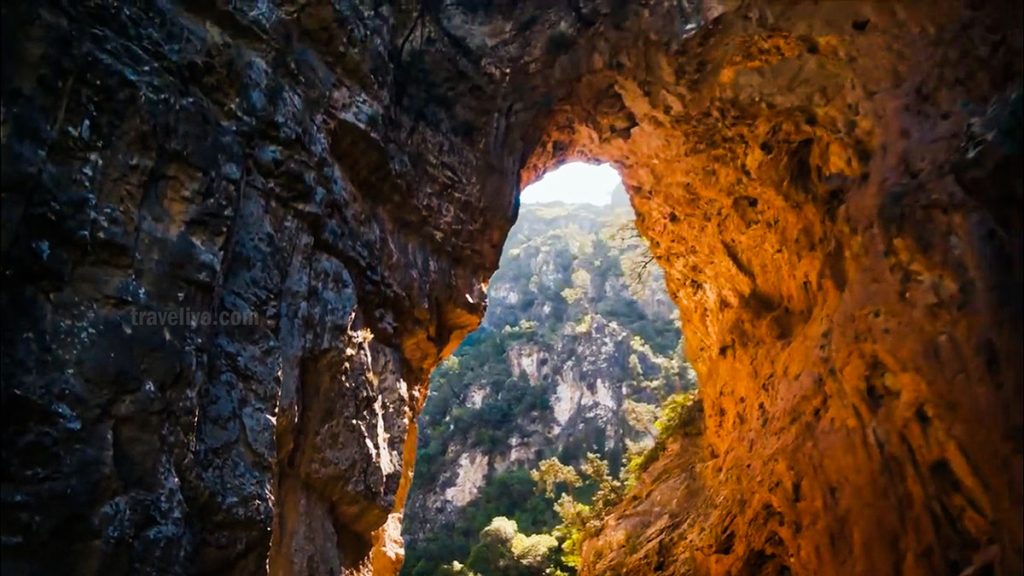
From my experience, the absolute best time to visit Talassemtane National Park is during the spring (March–May) and early autumn (September–November) months. When Taniya and I traveled there in late spring, the weather was perfect for Rif Mountains Hiking—neither too hot nor too chilly—and the trails were lush with blooming wildflowers. The temperatures were comfortable for long hikes, and the park felt alive with birdsong and vibrant greenery.
Summer can be enjoyable, but the heat on exposed trails can be intense, especially if you plan on tackling the long Akchour waterfalls tours. Conversely, winter brings a quiet, misty atmosphere, and some trails might be slippery or even closed due to heavy rainfall.
If I had to recommend, I would suggest planning your trip in spring to catch the waterfalls at their fullest flow and the mountains at their greenest. Early mornings are particularly magical, with soft sunlight filtering through the trees, making the experience of exploring Talassemtane National Park even more enchanting.
7. 🍹 Food & Drink: Fueling Our Rif Mountains Hike
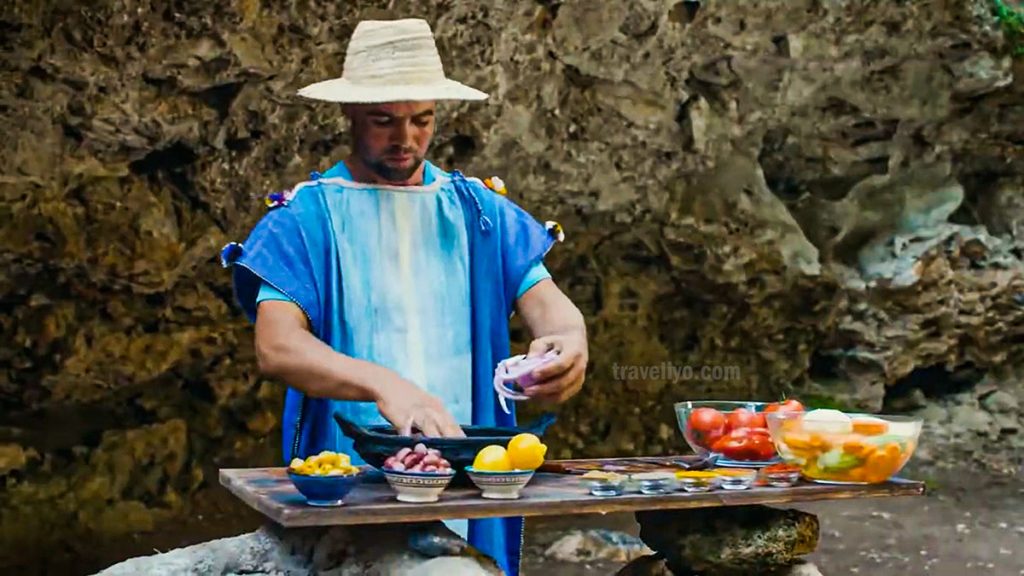
One of the true delights of visiting Talassemtane National Park was exploring the local cuisine in the small villages near the trails. After a long morning of Chefchaouen hiking, Taniya and I stopped at a quaint café just outside the park entrance. I never expected Moroccan mountain food to taste this good!
We tried a traditional tagine, slow-cooked with tender lamb, fragrant spices, and fresh vegetables. The combination of cumin, cinnamon, and preserved lemons created a flavor so rich that each bite felt like a story of the region itself. Taniya opted for a vegetarian couscous, packed with seasonal vegetables and chickpeas—and even she admitted it was one of the best meals she’d had on the trip.
For drinks, we sipped on fresh, hot mint tea, sweetened just right, and served in small glasses that made every sip feel ceremonial. The warmth of the tea paired perfectly with the cool mountain air, giving us energy for the next stretch of our hike. Eating amidst the greenery and listening to the waterfalls was an experience that no restaurant could replicate. Food in Talassemtane National Park isn’t just about taste; it’s about connecting with the landscape and local culture, making every meal a memorable part of the adventure.
8. 💰 My Travel Costs & Budget Notes for Talassemtane National Park
Traveling through Talassemtane National Park was one of the most affordable and rewarding experiences Taniya and I had in Morocco, but it still helped to have a clear idea of prices before going. Since we were already staying in Chefchaouen, the biggest expense for the day was transportation. We paid around 150–200 MAD for a private taxi to the trailhead, which felt fair considering the winding mountain roads and the flexibility it gave us. A shared taxi is cheaper, around 30–40 MAD per person, but availability can be unpredictable in the early morning.
Food inside the park is very simple and cheap. The small café we stopped at near the entrance served a hearty tagine for about 40–50 MAD, and mint tea went for 10 MAD. Our picnic items—bread, cheese, olives—cost no more than 30 MAD from a local market in Chefchaouen.
Guides are optional but useful for longer Rif Mountains Hiking routes. Most guides charge 150–300 MAD for half a day, depending on the trail. We didn’t hire one, but honestly, when we “accidentally” took a wrong turn because I trusted my “excellent” sense of direction, Taniya spent ten minutes teasing me about my mountain-navigation skills. The funniest part? A friendly goat appeared out of nowhere and followed us for a while—as if it wanted to guide us back to the real trail!
Water is essential. Bottled water costs around 5–10 MAD, but we carried two liters each, which saved money and made the hike easier.
Overall, a full day at Talassemtane National Park cost us about 250–300 MAD per person, including transport, food, and snacks—a very reasonable budget for such an incredible day in nature.
9. 💡 Traveliyo Insider Tips
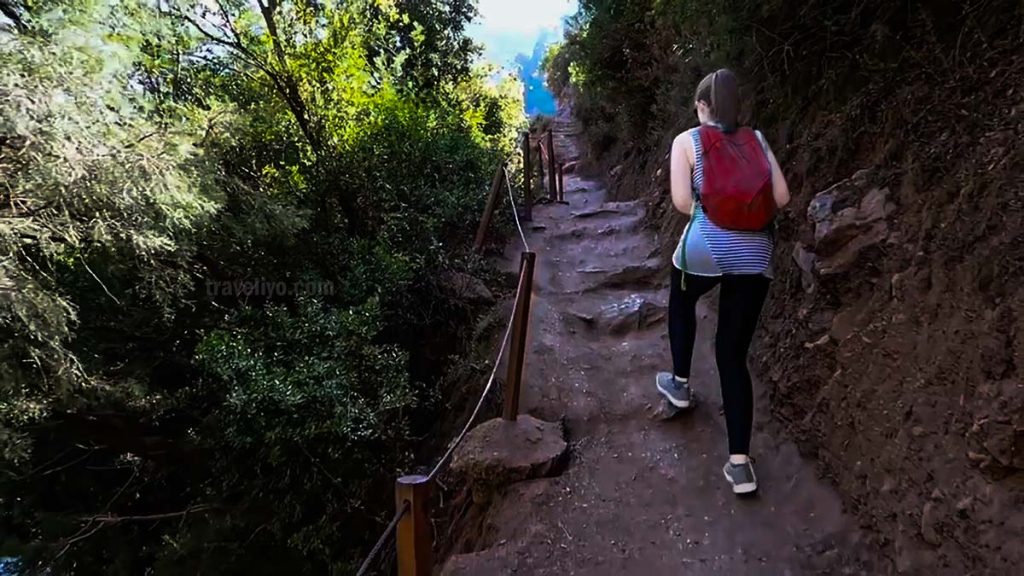
We already covered the basics, but here are a few extra tips Taniya and I learned on the trail that can elevate your experience from good to absolutely unforgettable:
Start Early: Ideally before 9 AM, because some routes get surprisingly warm toward midday despite the mountain climate, especially when you are doing Chefchaouen hiking.
Offline Maps are Crucial: Mobile signal is unreliable in several sections, particularly deep in the valleys near the Akchour waterfalls tours area. Download offline maps beforehand even if the trails look straightforward.
Pre-Arrange Transport: If you’re traveling from Chefchaouen, arrange your taxi the night before. Morning availability varies, and negotiating in advance helps secure a fair rate.
Water is Non-Negotiable: Always carry enough water; natural springs exist, but their safety isn’t guaranteed year-round.
Pack Light Snacks: Food options inside the park are limited to small cafés near the entrances. Pack light snacks such as nuts or fruit.
Footwear Matters: Wear proper footwear. Some paths become slippery after rain, especially near waterfall areas. A light jacket is useful even on sunny days.
The Magic Hour for Photos: Don’t just chase the sunrise. The best photography light—the “golden hour”—happens in the late afternoon (around 3:30 PM to 5:00 PM, depending on the season). The light hits the limestone cliffs perfectly then, turning the grey rock into soft gold. It’s especially good for shots of the towering Rif Mountains Hiking landscapes.
Meet the Locals, Skip the Formal Guides: If you prefer a truly authentic experience, skip the formal guides available in Chefchaouen. Instead, hire a local from a village inside the park, like the settlement near Akchour. They often charge less, speak Berber and rudimentary French/Spanish, and can show you sheep tracks and secret viewpoints no tourist ever sees. This is how you find the real Talassemtane National Park.
Go Beyond the Main Akchour Trail: The main trail to the Akchour waterfalls tours is often crowded on weekends. Ask locals for directions to the “God’s Bridge” (Pont de Dieu) trail first. It’s shorter, equally stunning, and less trafficked. We found a small, crystal-clear pool there perfect for a refreshing dip before lunch!
Cash is King (Dirhams Only): Do not rely on cards. The small cafés, local guides, and taxi drivers operating around the park boundaries only accept Moroccan Dirhams (MAD). Make sure you pull out enough cash in Chefchaouen before you leave.
10.❓ FAQ Section
1️⃣ Where is Talassemtane National Park located?
Talassemtane National Park is in the Rif Mountains of northern Morocco, just outside the famous blue city of Chefchaouen.
2️⃣ How do I get to the park from Chefchaouen?
The easiest options are taking a petit taxi, hiring a private driver, or arranging transport with your guesthouse. The drive usually takes 20–30 minutes depending on the trailhead.
3️⃣ Do I need a guide to explore the park?
A guide is not required for most popular trails, but hiring one is recommended for longer or lesser-known Rif Mountains Hiking routes.
4️⃣ What is the best time to visit Talassemtane National Park?
Spring (March–May) and autumn (September–November) offer the most pleasant hiking temperatures and clear views.
5️⃣ Are the hiking trails difficult?
Difficulty varies. Some trails are easy and suitable for beginners, while others require good fitness and proper hiking shoes.
6️⃣ Can I swim in the waterfalls or rivers?
Swimming is allowed in many areas, especially near popular waterfalls like those accessible via Akchour waterfalls tours, but always check water conditions.
7️⃣ Is camping permitted inside Talassemtane National Park?
Yes, wild camping is generally allowed, but only in designated areas. Always check current regulations with local authorities or guides before setting up camp, and practice ‘Leave No Trace’ principles.
8️⃣ Are there entrance fees for the park?
Currently, there is no official entrance fee for the overall Talassemtane National Park. However, some local communities or specific trailhead areas might request a small fee for parking or access to certain viewpoints.
9️⃣ What languages are spoken by the locals in the Rif Mountains villages?
The primary languages spoken by locals in the mountain villages are Tarifit (a Berber language) and Moroccan Arabic (Darija). French and Spanish are sometimes spoken due to historical influence, especially by guides and older residents.
🔟 Can I see the endangered Moroccan Fir in the park?
Yes, the park is home to some of the last remaining stands of the endangered Moroccan Fir (Abies maroccana). These are typically found in the higher, cooler elevations of the park’s cedar forests.
11. 📘 Traveliyo Recommendation: Should You Go?

When Taniya and I compare our various adventures—be it the beaches of Australia or the historic cities of the UK—Talassemtane National Park stands out for one powerful reason: its rawness. This isn’t polished tourism; this is real adventure.
Our Verdict? YES, absolutely.
Who is this trip for? This trip is perfect for the traveler who:
Loves the challenge of Rif Mountains Hiking and wants panoramic views, not just city walls.
Appreciates genuine Berber culture, away from the Marrakech crowds.
Is looking for a budget-friendly, highly rewarding natural escape near a major European flight hub (like the UK or Spain).
The park delivers a rare blend of European-style mountainous beauty (think Swiss Alps, but warmer!) and unique North African ecology. If you already loved the vibe of Chefchaouen hiking, the scale of Talassemtane National Park will take your breath away. Don’t hesitate—book the flight, pack your boots, and prepare for Morocco’s most rewarding natural trek!
12. 👇 Nearby Attractions to the Talassemtane National Park
While Talassemtane National Park itself is a treasure trove of biodiversity and stunning landscapes, the surrounding region offers even more experiences for curious travelers. Here are some must-visit nearby attractions:
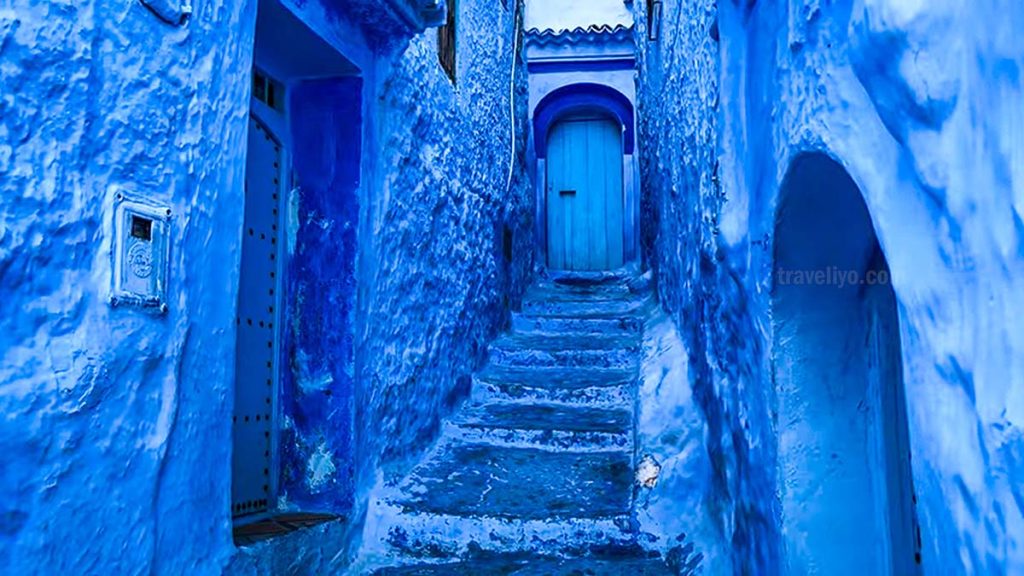
Chefchaouen – The Blue Pearl: Just a short drive from the park, Chefchaouen is Morocco’s famous blue city. It’s perfect for photography, cultural exploration, and enjoying local cuisine. Read the complete travel guide 👉
Rif Mountains: The majestic Rif Mountains extend around the park and are ideal for hiking enthusiasts. Trails range from moderate day hikes to challenging multi-day treks, offering panoramic views.
Akchour Waterfalls: About 1–2 hours from the park, the Akchour Waterfalls tours are a natural wonder. A hike through lush forests leads to cascading falls and clear pools—perfect for nature lovers and adventure seekers. Read the complete travel guide 👉
Tetouan: A bit farther away, the city of Tetouan is a UNESCO World Heritage site, offering a fascinating look at Spanish-influenced architecture and history.
The Final Word from Lakshitha
Talassemtane National Park truly offered Taniya and me the natural, spiritual escape we needed. If you are looking for world-class Rif Mountains Hiking that gets you away from the usual tourist crowds, this park is an absolute must-visit.
Ready for the next adventure? Our journey to the Akchour Waterfalls was an epic trek filled with surprises and stunning views. Click here to read our dedicated article: Akchour Waterfalls: The Full Guide to Morocco’s Hidden Oasis. (Link to be inserted later)
For more historical background, You can read the detailed article on Wikipedia
Did this guide help you? Have you also visited Talassemtane National Park? Share your experience in the comments below – it will be very valuable for other travelers.


